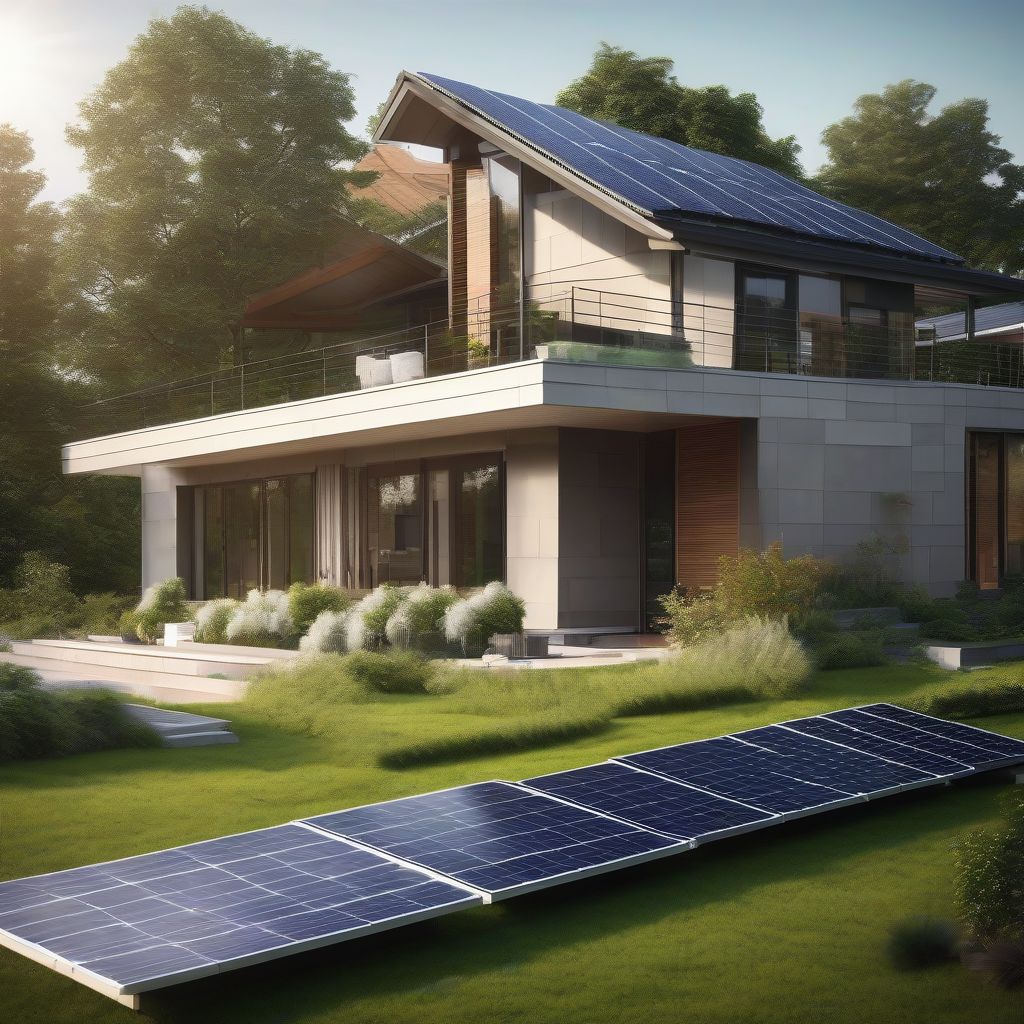Imagine a home so energy-efficient it produces as much energy as it consumes. No more sky-high electricity bills, a smaller carbon footprint, and a lighter impact on the planet. This is the promise of a net-zero energy home, and it’s closer than you think!
What is a Net-Zero Energy Home?
A net-zero energy home, often called a zero-energy home or zero-carbon home, generates as much renewable energy as it consumes over a year. It’s like a perfectly balanced energy equation, where your home contributes to a greener future.
Why Should You Consider a Net-Zero Home?
The benefits of a net-zero home extend beyond environmental responsibility; they touch your wallet and comfort too:
- Reduced Energy Costs: Significantly lower or eliminate your monthly energy bills.
- Environmental Stewardship: Minimize your carbon footprint and contribute to a healthier planet.
- Increased Home Value: Net-zero homes are highly desirable and can increase your property value.
- Enhanced Comfort: Enjoy a more comfortable living environment with consistent temperatures and improved air quality.
Key Steps to Achieve a Net-Zero Energy Home
1. Prioritize Energy Efficiency
Building or retrofitting a highly energy-efficient home is the foundation of achieving net-zero. Consider these strategies:
- Insulation and Air Sealing: Proper insulation and air sealing prevent energy leaks, keeping your home comfortable year-round.
- Energy-Efficient Windows: Opt for double or triple-paned windows with Low-E coatings to minimize heat gain and loss.
- Energy-Star Appliances: Choose Energy Star-certified appliances and electronics to reduce energy consumption.
- LED Lighting: Replace traditional incandescent bulbs with energy-efficient LED lights.
- Water Heating: Explore energy-efficient water heating solutions like tankless water heaters or heat pump water heaters.
2. Embrace Renewable Energy Sources
Once you’ve maximized efficiency, it’s time to integrate renewable energy sources to power your home:
- Solar Panels: Solar panels convert sunlight into electricity, reducing your reliance on the grid.
- Wind Energy: If you live in a windy area, small wind turbines can supplement your energy needs.
- Geothermal Heat Pumps: Geothermal systems use the earth’s constant temperature to heat and cool your home efficiently.
3. Monitor and Manage Your Energy Use
Understanding your energy consumption patterns is crucial for optimization:
- Home Energy Audit: A professional energy audit can identify areas for improvement and provide tailored recommendations.
- Smart Home Technology: Smart thermostats, lighting controls, and energy monitors give you control over your energy usage.
Frequently Asked Questions About Net-Zero Homes
1. How much does it cost to build a net-zero home?
The cost of building a net-zero home varies depending on factors like location, size, and chosen technologies. However, with careful planning and available incentives, the upfront investment can be offset by long-term savings.
2. Can I retrofit my existing home to be net-zero?
While building from scratch offers more flexibility, retrofitting an existing home is possible. Prioritize energy efficiency upgrades and then incorporate renewable energy sources as feasible.
3. Are there financial incentives for building net-zero homes?
Yes, many governments and utility companies offer financial incentives like tax credits, rebates, and net-metering programs to encourage net-zero construction and renovations.
 Net-Zero Home with Solar Panels
Net-Zero Home with Solar Panels
Conclusion
Achieving a net-zero energy home is an investment in a sustainable future and a testament to responsible living. By embracing energy efficiency, renewable energy sources, and mindful consumption, you can create a home that is environmentally friendly, comfortable, and cost-effective. It’s a journey worth taking, one step at a time, towards a greener and brighter future.
Ready to explore your net-zero home options? Contact a certified energy professional to discuss the best solutions for your needs and goals.
[amazon bestseller=”net zero home”]
